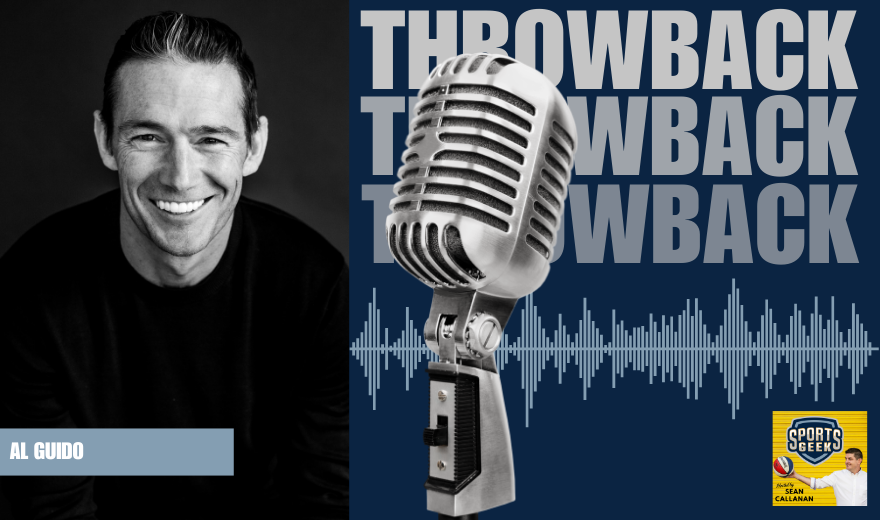This transcript has been lightly edited by AI
Sean: That's definitely the thing because when we're starting out and putting down the planes both of the physical building but then the tech from the ticket experience and how the tickets and the app integrates food ordering you to do a lot of feature like looking in the feature and saying remember these fans. How will they be interacting. How do we want them to interact. Has experience going to be different. But do we want the fans to be going to Candlestick Park going to the same spot drive into the same spot going to the same seat.
How much of that was trying to one get them all to move here. But then to say this is going to be a totally different experience.
Al: Well we had to rewire the game day experience in the stadium operations world because obviously we're 50 miles south of where we were. Now I'll tell you people that we are actually closer to the majority of our fans. Seven percent of our season ticket holders actually lived in San Francisco when we played there. So we were moving a lot closer to our fans.
The traffic and transportation routes were something that they were looking forward to. On the technology front, I would just say that we were getting with the times. You've been to Candlestick. You literally couldn't connect to your device you couldn't send a text you couldn't download information on the Internet. You could certainly upload a video and send it out. So much of the sports world is dramatically changing and we were coming along at a great time when mobile apps and technology was something that you had to do or people would just stay home at their couch.
Sean: I remember the conversations at conferences in 2010 2011. It was like how do we get Wifi in. By 2013 2014 Wi-Fi was just utility. We have to have them. It's expected by the fans and so Levi's opened at the right time when all this tech had started being signed off. And the idea of what fans wanted and how you can integrate sponsors and those kind of things that were happening in different stadiums in piecemeal and you're able to sort of put the total stadium package together.
Al: We came along at a really good time for what I would say two reasons one stadium technology and fiber and infrastructure was dramatically changing overnight. DAS systems and Wi-Fi installations and then the second part is we got really lucky to be in the barrier when it relates to people.
We were able to hire tremendous people to work on our tech infrastructure. We literally hire the person who built the Facebook underlining tech infrastructure. And he came up with an idea with a Rouba to do the first ever underseas Wi-Fi installation. And that really changed the game because the whole problem is how do you get 70000 fans connected to a device. It was both a math equation and the technology challenge and so for us I think we figured that out.
And then when you lay the app on top of it it gives you so many opportunities to connect with your fans. I talk about it in the world where sports in stadium used to be so much push marketing. You look at a big board. You just push it out to all 70000 now it's a little bit of pull because fans can just decide what they want to interact with right or what data points they want or what fair or what players they want to follow or what food they want to order.
And I felt like the landscape of sports was changing and you're right we came along at the right time relative to technology relative to stadium development and relative to falling actually what fans wanted in venue yet. And then you've got the analytics of what the fans are doing. Remember talk to the guys after Super Bowl 50 saying well this is what the fans were doing it was much uploading an outward traffic as it was in bad traffic because it's a look at me moment and the fact that the infrastructure is there.
Sean: You're allowed it allows it to happen. But when you're in those days it didn't have that Wi-Fi. It doesn't it didn't get out.
Al: No you see it now. The mandates of the NFL is putting on all these new venues and then the retrofits for all of these other stadiums. We're going through adding pieces of Wi-Fi and DAS and upgrading some of our systems and we're only in year 5. And most of that is due to the upload traffic. The amount of videos or whatever social whether it's Facebook Twitter Snapchat whatever you like. The upload traffic that people are sending out the world in the video and the capture rate is challenging on these buildings and so we're doing a lot on our infrastructure to make sure that we keep up with the times.
Sean: And it was funny especially with the streaming services like Periscope and Meerkat that came out so many of the vendors and the rights holders are like we don't want these fans sharing this content because it's going to affect TV rights and things like that when now looking back it's like well hang on this is sharing the live experience around the world. You've got this problem of people turning up to live. We want to show also live experiences. We want to enable that for fans.
Al: Couldn't agree more.

